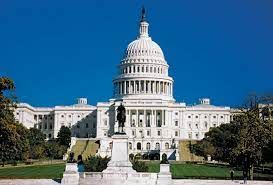S&P 500: -2.27% DOW: -1.11% NASDAQ: -2.85% 10-YR: 4.06%

Last Week on WallStreet - August 5th, 2023
What Happened?
Equity markets took a tumble this week as the S&P 500 and Nasdaq Composite recorded their worst weekly performance since March's banking panic. While the US government's credit downgrade, higher wage growth in Friday's job report, or idiosyncratic earnings results could be pointed to as the culprit, markets appeared ready to pounce on any news to justify a move lower. The year-to-date rally has launched stock valuations sky high and the resolve of the bull camp will now be tested at these higher level. The key question becomes, will investors belief in equities hold strong through this recent pull back, or will the bears find firm ground to push prices lower.
Beneath the surface, one sector stood alone as the sole positive performance this week. That sector was Energy (1.3%) which notched a solid gain despite the broad turmoil in equity markets. Higher interest rates forced a decline in Utilities (4.6%) names while Technology (3.8%) saw a pullback following this year's intense run-up.
The US Economy Added 187,000 Jobs in July, Fewer Than Expected
- Nonfarm payrolls expanded by 187,000 for July, slightly below the estimate for 200,000
- The unemployment rate fell to 3.5% after being expected to hold steady at 3.6%
- Average hourly earnings rose 0.4% for the month, good for a 4.4% annual pace, both above expectations
- Health care, social assistance, financial activities and wholesale trade were the leading sectors for job creation
The key takeaway - The July jobs report provided yet another reflection of the strong US labor market. Despite the figures coming in slightly softer than expected, the overall health of the market is unquestionable. A 3.5% unemployment rate is hard to argue against and, for now, it seems this aspect of the economy is chugging along without a worry. Investors should worry, however, about the acceleration in wage growth figures for July. Wage growth is a strong contributor and indicator of the inflationary environment and likely needs to moderate further from a 4.4% year-over-year level to show the long-term inflation battle is being won. The Fed will certainly consider this at its next meeting in September.
Fitch Downgrades U.S. Credit Rating
- Fitch Ratings, one of the big 3 ratings agencies, downgraded the US government's credit rating from the top grade of AAA to the notch below AA+
- It is the first such downgrade the US has experienced since 2011 following the tense debt-ceiling negotiations
- “The repeated debt-limit political standoffs and last-minute resolutions have eroded confidence in fiscal management,” Fitch said
- Fitch also cited the growing fiscal deficit as a concern
The key takeaway - The rating agency's downgrade of the US government solidified some of the key concerns for investors over the last few years. The political battles, debt-ceiling turmoil, and greatly expanded budget deficit following the pandemic all contributed to ultimate the decision. Despite the headline buzz around the downgrade, it's unlikely to have any immediate impact on the functioning of markets or on the US bond market's place as top dog. Being the world's reserve currency, one of the most reliable borrowers ever, and the globe's largest economy gives the US government quite a lot of leeway. However, broadening your perspective to the long term reveals that these issues could be detrimental to maintaining that status over the coming decades.
Service Side of the Economy Slows, ISM Finds, But 'Sales Have Been Steady'
- The ISM measure for business conditions in the services economy fell from 52.7% to 53.9% but remained firmly in expansionary territory
- New orders continue to be healthy, but the prices-paid gauge, a measure of inflation, remained high as well
- The manufacturing sector reading recorded its ninth-straight month in contraction by edging up slightly to 46.4%
- New orders gained while the prices paid index declined, potentially showing some improvement in the pipeline
The key takeaway - Nearly every indicator on the two broad areas of the US economy this entire year has told the same bifurcated story as the most recent ISM data. Following the goods-powered growth during the Covid pandemic, manufacturing has experienced a steep slide while the services sector has carried the economy squarely on its back. Despite high inflation and interest rates, American consumers continue to spend on restaurants, bars, and experiences. The strength of this resilient consumer impulse was not expected by many economists and has allowed the economy to remain steady.

From the Waterloo Watercooler
Uber, the famously unprofitable ride-hailing company, posted its first-ever operating profit in Q2 thanks to growth in its main business lines
The union representing Hollywood’s striking writers plans to meet with studios on Friday for the first time since breaking off negotiations in May
Amazon expanded its virtual healthcare service, Amazon Clinic, to all 50 states
A Fed survey released yesterday shows banks are being stingier when handing out cash, thanks to all those interest rate hikes



